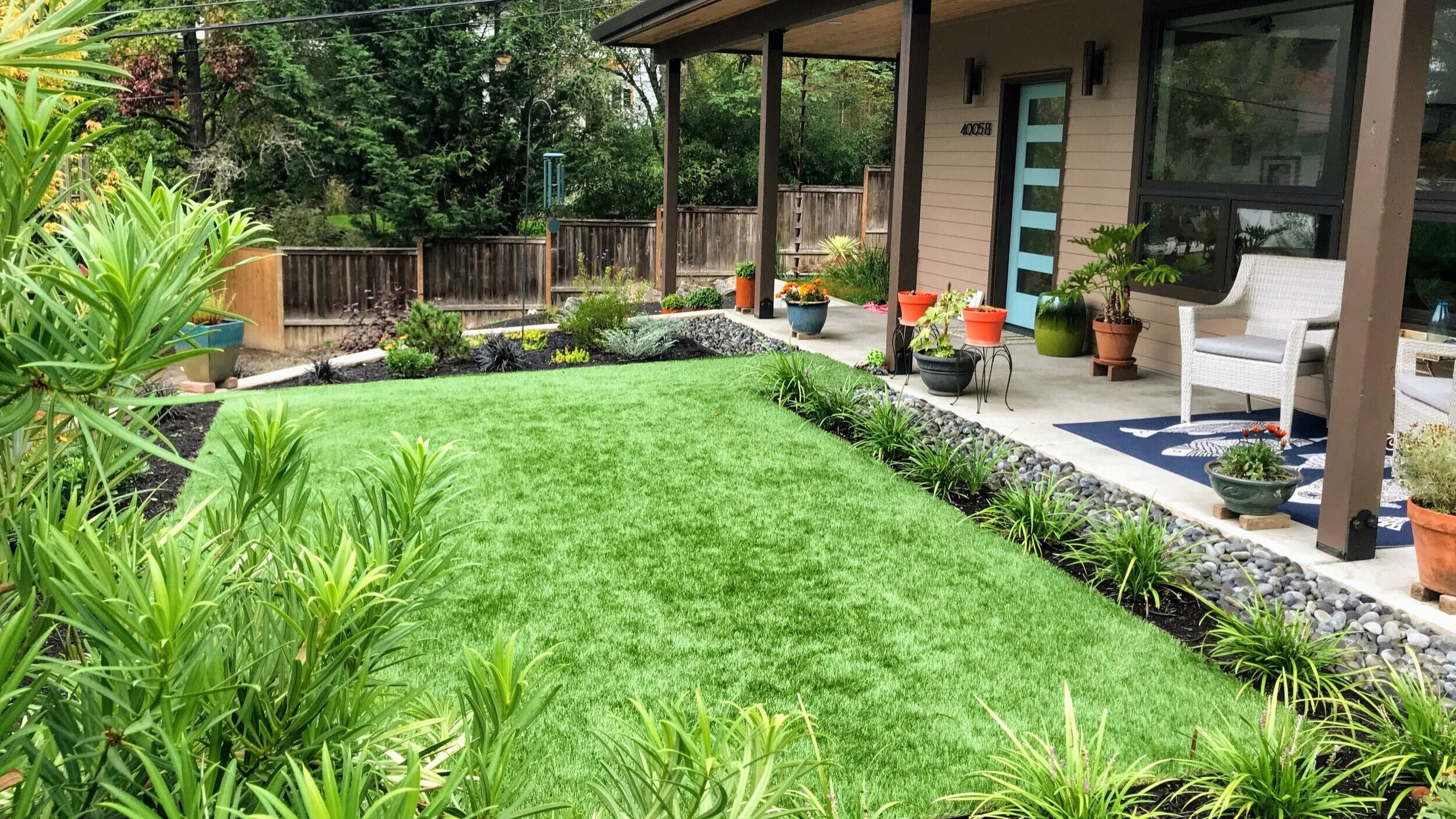Delve Into the Environmental Advantages of Opting for Synthetic Grass Solutions
The fostering of artificial turf solutions provides an engaging chance to attend to pressing ecological challenges. By considerably decreasing water usage and decreasing the application of harmful chemicals, these options not just promote lasting landscape design however also protect regional environments.
Water Conservation Perks
Among one of the most considerable advantages of man-made grass is its capacity to preserve water. Typical yard lawns call for significant irrigation, particularly in locations susceptible to drought or water restrictions. On the other hand, synthetic grass does not need watering, significantly reducing the total need for water resources. This attribute is specifically useful in arid regions where water deficiency is a pressing concern.
By eliminating the requirement for normal watering, fabricated turf contributes to sustainable landscape methods and aids alleviate the environmental impact of excessive water usage. In addition, the conservation of water reaches the reduction of overflow, which can result in dirt disintegration and waterway air pollution.
Furthermore, the installation of fabricated grass enables homeowners and communities to allot water sources more successfully, concentrating on vital uses such as drinking water and farming. The change towards fabricated turf not just promotes responsible water usage yet also aligns with more comprehensive ecological goals focused on maintaining natural deposits.
As areas progressively focus on sustainability, the water preservation benefits of synthetic grass present a compelling case for its adoption in residential and industrial landscaping jobs.
Minimized Chemical Use
The transition to man-made lawn significantly decreases the reliance on chemical therapies generally used in natural lawn maintenance. Traditional grass monitoring commonly involves the application of fertilizers, chemicals, and herbicides to promote development and control parasites. These chemicals can posture dangers to human health, regional wild animals, and the setting, adding to dirt and water contamination.
In contrast, fabricated turf gets rid of the demand for these unsafe compounds. By reducing the release of artificial compounds into the community, synthetic lawn advertises much healthier soil and water systems.
Furthermore, the lack of chemical runoff connected with synthetic grass installations assists safeguard neighborhood rivers from pollution, supporting water life and keeping biodiversity. Arizona artificial turf. As areas significantly focus on lasting methods, selecting synthetic grass offers a feasible option that straightens with environmental preservation objectives. Via this change, homeowner can enjoy lavish green spaces without endangering eco-friendly health and wellness, leading the means for a much more lasting future
Reduced Carbon Impact

Additionally, the setup of synthetic grass can result in considerable water conservation. All-natural yards call for substantial amounts of water for watering, which not only contributes to the carbon footprint connected with water removal and treatment however additionally strains local water resources. On the other hand, synthetic grass needs marginal maintenance, needing no watering, thus considerably decreasing water usage and its connected energy costs.
In addition, the longevity of synthetic grass adds to its reduced carbon influence. With a lifespan of as much as 15 years or even more, the need for regular substitutes is decreased, causing much less waste and reduced energy consumption in manufacturing and throwing away traditional grass choices. On the whole, synthetic grass provides a sustainable alternative for eco aware landscape design.
Habitat Conservation
Environment preservation is a vital consideration in the debate over landscape design options, especially when contrasting synthetic lawn to all-natural grass. All-natural yard lawns frequently require extensive upkeep, get redirected here consisting of making use of fertilizers, herbicides, and pesticides, which can negatively influence neighborhood environments. These chemicals can seep into the dirt and waterways, hurting native vegetation and fauna and interfering with local habitats.
Fabricated turf gets rid of the need for dangerous check out here chemicals, consequently protecting neighboring wildlife and preserving the stability of bordering ecosystems. The setup of synthetic lawn can lead to the conversion of former yard locations right into even more biodiverse landscapes, such as pollinator yards or native plant locations, which can sustain local wild animals.
Ultimately, the transition to synthetic grass not only conserves water and reduces maintenance efforts but additionally fosters a much more harmonious relationship between human activities and the natural surroundings, promoting environment conservation in the process.
Long-Term Sustainability
Long-term sustainability is a vital consider reviewing the advantages of synthetic grass over traditional yard yards. Among the most considerable benefits of man-made lawn is its durability; it can last as much as 15-20 years with very little upkeep, whereas natural turf needs regular reseeding and replacement. This durability minimizes the need for consistent resources, such as water, plant foods, and pesticides, which are essential for keeping a healthy yard yard.
In addition, man-made turf adds to a decrease in carbon emissions connected with yard care devices. Traditional yards often call for gas-powered lawn mowers, leaners, and blowers, all site of which contribute to air contamination. Turf installation phoenix az. In contrast, synthetic grass removes the demand for such devices, promoting a cleaner atmosphere
In addition, the manufacturing of synthetic grass increasingly makes use of recycled materials, improving its sustainability profile. As producers take on environmentally friendly techniques, the environmental impact of fabricated turf continues to reduce.

Conclusion
The fostering of fabricated grass services offers substantial environmental benefits, consisting of significant water conservation, lowered dependence on hazardous chemicals, and a reduced carbon footprint. Moreover, synthetic grass aids in protecting all-natural habitats by decreasing land disruption and advertising long-lasting sustainability with using resilient products. Jointly, these elements emphasize the potential of synthetic grass to add favorably to environmental health and provide a sensible option to standard landscape design techniques in a progressively resource-conscious globe.
In contrast, artificial lawn does not need watering, significantly minimizing the overall need for water resources. By decreasing the release of synthetic compounds into the community, synthetic lawn advertises much healthier dirt and water systems.
Moreover, the installation of man-made turf can result in substantial water preservation. In contrast, fabricated lawn needs minimal upkeep, needing no watering, consequently considerably decreasing water usage and its associated energy expenses.
